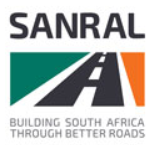E-tolls do not impact disproportionately on the poor
The South African National Roads Agency (Sanral) welcomes the Gauteng appointed e-tolls advisory panel's report and hopes it or parts of it will not be confined to 'file 13' simply because the views expressed do not accord with the misguided wishes of those who purport to care for the poor.
Their pronouncements of caring for the poor are nothing but cheap populism, the agency said.
The e-toll advisory panel's report does not support the narrative that e-tolls have a disproportionate burden on the poor.
The advisory panel's own report and submission to the Gauteng ANC Provincial Executive Council indicate the percentage of total financing burden on low-income people is only 0.4%. This contradicts the view that e-tolling imposes "a disproportionate burden on the poor".
Sanral says it has conducted its own research which shows that "98% of the users of the e-tolled roads are middle and higher income earners. It is therefore not clear how the claim that e-tolling has a disproportionate impact on the poor can be made. Is it political expediency, plain dishonesty or simply a matter of ignoring those parts in the report which some don't like?" asked its spokesperson Vusi Mona.
Slide presentations of the panel, which the agency has seen, show that low income groups with cars do not use the Gauteng Freeway Improvement Project (GFIP) but use other roads, with only 1% of taxis and busses - the preferred mode of transport for the poor - using GFIP (see illustration below).
But even for the users, Sanral's own figures, collected after a year's operation of the system, show that of the 5.2 million unique vehicles that were detected when they went under the gantries, 79% would have paid under R100 per month had they been e-tag registered.
"This is actual data we are working with and not scenarios. Therefore, the perception that e-tolls are prohibitively expensive does not stand up to scrutiny. Yes, they are expensive for the non-compliant user and the one who has opted not to take up the 48% discount available to an e-tag registered user," says Mona.
Furthermore, a survey conducted by IPSOS and quoted in the report, shows that 34% agree to pay for the use of the GFIP, 27% are neutral and 38% disagree to pay. A four% difference in such a highly emotional and politicised atmosphere would be splitting hairs. It is not the claimed, by the detractors of the project, massive resistance to the payment of tolls. Sanral would like to thank all those who have continued to do the right thing.
In the section dealing with scenarios and options for a hybrid funding model, the panel's presentation shows that with e-tolls being the only funding source, the percentage of total financing burden falling on low income groups is 0.4% but increases as other funding sources are introduced. Critically, the panel's presentation also shows e-tolling has the highest impact (18.2%) on congestion reduction than any of the other five funding options which introduce hybrid models (see illustration below).
Once again, the actual traffic conditions reflect the impact of a misperception that was created post the announcement of the panel. Since July 2014, after the announcement of the panel and the impression was created that the e-tolling will be done away, overall traffic volumes on the GFIP increased by more than 10%.
This is the equivalent growth of approximately 3 years. This increase in traffic on the GFIP was generated from among others, a decrease in public transport usage, including the Gautrain.
Significantly, the distribution of costs would be 5% on low income groups, were a fuel levy to be introduced (much higher than the 0.4%), the panel found. See illustration below:
"We are happy that the panel's own research confirms that e-tolls are the most effective means of dealing with traffic congestion and the least burdensome on the poor. What is concerning is that these aspects of the report are being ignored or not being emphasised - for whatever reason," says Mona.
Sanral is currently studying the report and subjecting it to expert analysis and will further communicate in this regard in due cause.
"While we all await the outcome of the process led by the deputy president to give us policy clarity and direction on this matter, we felt it important to point out some of the contradictions between what the panel has presented and what is being circulated in the public domain.
As policy implementers we have a duty to caution against hyperbole lest we find ourselves on a policy path whose point of departure is totally flawed. Also, it is our view that the report was never meant to contain absolute truths that cannot be debated or challenged," says Mona.
